Tiime: 9:45AM – 2:30PM
Location: National Forest Land
Willow Creek 08/02/2024 Photo Album
Note: In order to protect small high country streams, I have chosen to change the name for a few. This particular creek happens to be one of them. Excessive exposure could lead to crowding and lower fish densities.
Friday was another hot day in Denver with temperatures approaching 100 degrees. I sought a high country stream or a tailwater to cool myself off and to escape the sauna that is called Denver. I experienced a superb day on South Boulder Creek on Tuesday, July 30, 2024, so my inclination was to return. Recall that I experienced issues with my wading boots and my waders, so I was anxious for redemption using my repaired fly fishing uniform. I replaced the Boa cables on my left and right wading boots, and I concluded that my Redington Sonic Pro waders were irreparable, and I ushered my backups into service. I checked the flows on South Boulder Creek, and they remained higher than I prefer, but only a notch below Tuesday’s levels at 162 CFS. I prepared my lunch and loaded the car with fishing gear and staged all my other fishing needs, so that I was prepared for an early start. In short, I was excited for another day on South Boulder Creek ( SBC).
All this took place before Jane stumbled across an online map that showed the areas affected by the four Front Range wildfires. When I viewed the map surrounding the Lake Shore Fire, I discovered that the blaze was near Gross Reservoir, and the impacted area extended over the Walker Ranch Loop Trailhead; the very trailhead that I use to access the creek since Gross Dam Road has been mostly closed since construction work on the dam began. I dug further, and I found out that Flagstaff Road was closed between a fire rescue station and Gross Dam Road, and the closure was before the turnoff to the Walker Ranch Loop Trailhead. A quick change in plans was in order. I did uncover a bit of good news surrounding the Lake Shore fire, as the web site informed me that the fire was quickly contained and confined to a relatively small area, so barring another fire or a sudden change in status, I suspect that SBC will once again be accessible shortly.
Now I needed to choose a new destination. Most of the Front Range options were impacted by wildfires including the Big Thompson and the St. Vrain. I was not impressed with my last visit to Bear Creek, and Clear Creek was not attractive to me, as it does not fish well in the heat. I investigated Eleven Mile Canyon, and the flows were in the 175 CFS range, but the fly shop report cited crowding even during weekdays. The report actually suggested showing good angling etiquette twice, and I took that as a bad sign. Finally I decided to revisit a stream that I fished twice this summer already. As mentioned earlier, I was prepared, so I got off to a nice early start, and that enabled me to park near the creek by 9:15AM.’
I pulled on my backup waders and cinched my replacement Boa cables on my wading boots, before I broke out my Orvis Access four weight, and I was ready to fish. I arrived at a spot on the stream that was different from my first two visits, and I began my effort with a solo peacock hippie stomper. I was shocked when the hippie stomper failed to interest any fish in the first fifteen minutes, and I approached a place with some faster entering current, so I added a beadhead hares ear nymph on a 2.5 foot dropper. The action improved, and I built the fish count to twenty by the time I paused for lunch at 11:50AM. That may seem like a torrid catch rate, but I also experienced my share of refusals and temporary hookups. Nearly all the trout in the morning session were brook trout, but I also landed one small brown and another juvenile brown trout beneath the six inch minimum.
The section of the creek that I fished on Friday contained many more slow moving pools, and the level of the stream was quite a bit lower than my last trip with Ben. This translated to long casts and gentle presentations. I will be the first to admit that I did not execute this finesse on a consistent basis; and, therefore, I witnessed many mass evacuations from some prime pools. Nevertheless, twenty fish in a little over two hours of fishing was quite acceptable, and I was very focused on my approaches and casting technique. Quite a few beaver dams existed along my upstream migration, but in each case they were breached. It made me wonder if a human being was responsible to keep the water flowing.
After lunch I resumed prospecting with the dry/dropper, but it seemed as though the catch rate waned a bit. The hippie stomper and beadhead hares ear continued to deliver positive results, and the fish count blossomed to thirty. At this point the hackle on the hippie stomper unraveled, so I decided to introduce some new surface flies, and while I was at it, I exchanged the dropper nymph as well. For the top fly I cycled through a parachute hopper, a Jake’s gulp beetle, and a size 10 Chernobyl ant. For the nymph component I tried a salvation nymph, and it nabbed a few fish, but the hares ear seemed far more effective, so I returned to the dependable hares ear after a reasonable salvation trial.
I managed to boost the fish count from thirty to forty-one with this mix of flies, but none of them compared favorably to the high standards of the hippie stomper. During the afternoon the brown trout portion of my catch improved somewhat, as I landed four countable browns, and this included a pair of very respectable thirteen inchers. A couple brook trout in the ten inch range also visited my net, and they represented the largest brook trout on the day.
The last twenty minutes were quite challenging, as it seemed that I spooked large schools of decent sized fish. I even observed one fish that must have measured in excess of fifteen inches, but it was fleeing its position and darting to an undercut bank from the impact of my flies. In retrospect, I wish I would have tried a double dry rig. Even though I landed forty-one fish and quite a few on the nymphs, I suspect that I would have startled fewer fish with the softer landing of two small dry flies.
One factor I left out of this piece was the wind. It was atrocious, as it gusted quite regularly. As the creek meandered a bit, I faced cross winds and head winds, but never a tail wind. The cross winds were the worst, especially when I attempted to place the flies close to the right bank. Compensating for a variable wind is a casting skill that is at the expert level. I managed to do it a few times, but I also hooked some bushes and slapped down some heavy landings. Wind induced tangles were also a repeating problem, although I felt like I minimized untangling time quite well under the conditions.
Friday was a very enjoyable fly fishing day, and I am quite infatuated with the stream that I named Willow Creek. My three visits met or exceeded my expectations. The heat wave is projected to continue for the foreseeable future, so I will likely be seeking tailwaters and mountain creeks in August. Hopefully, South Boulder Creek, returns as an option shortly.
Fish Landed: 41

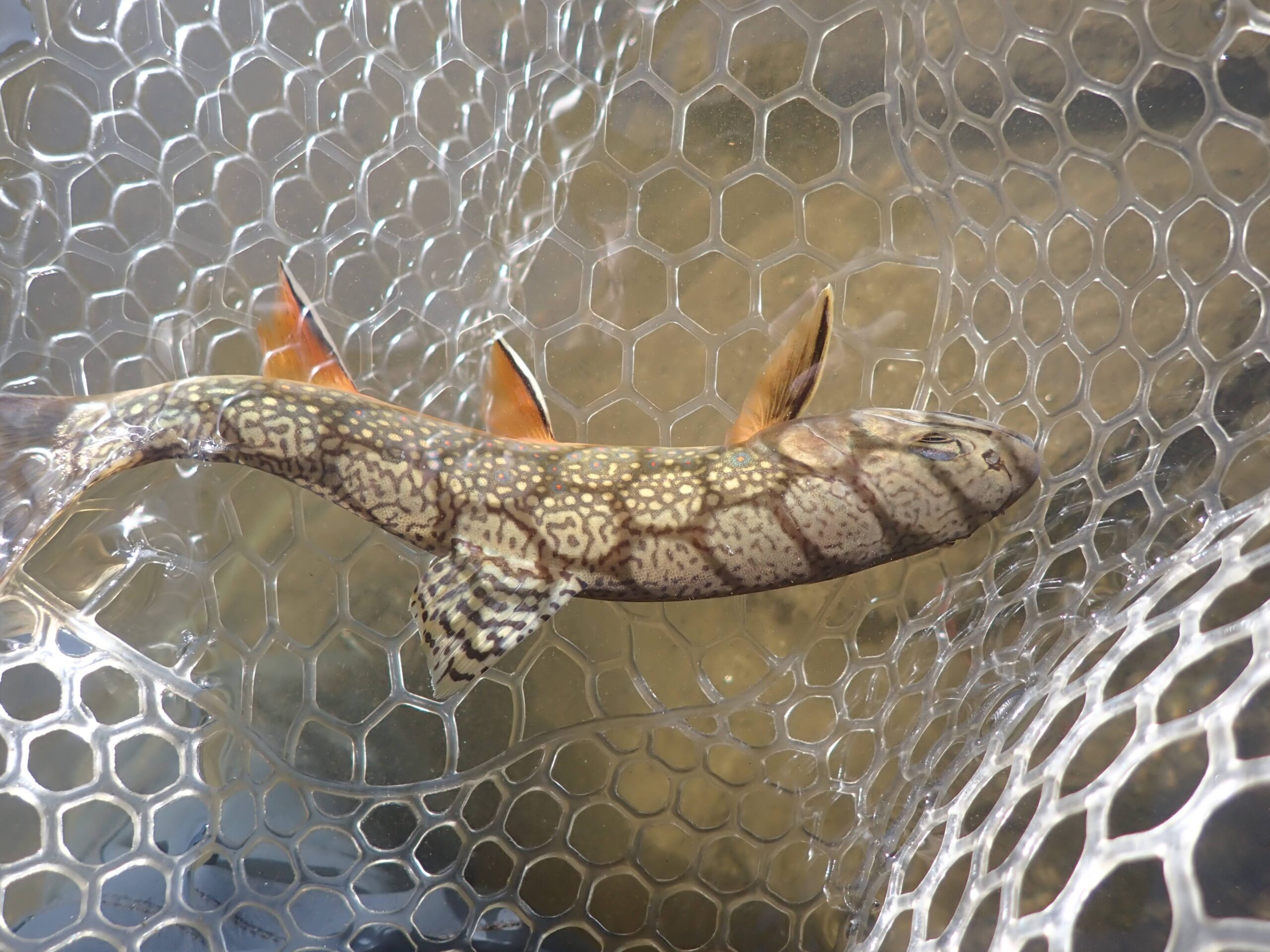 Finning in the Net
Finning in the Net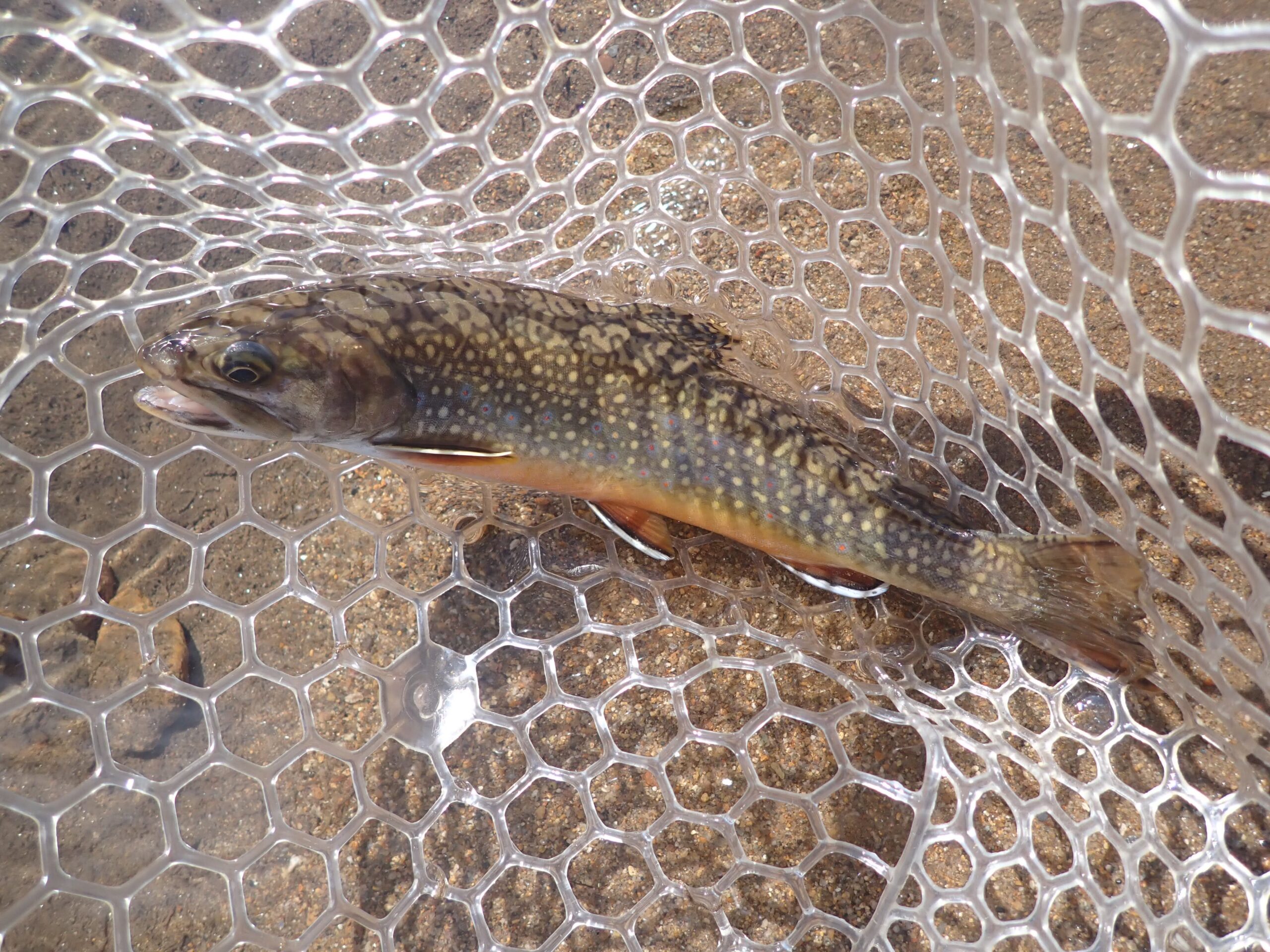 Good Start
Good Start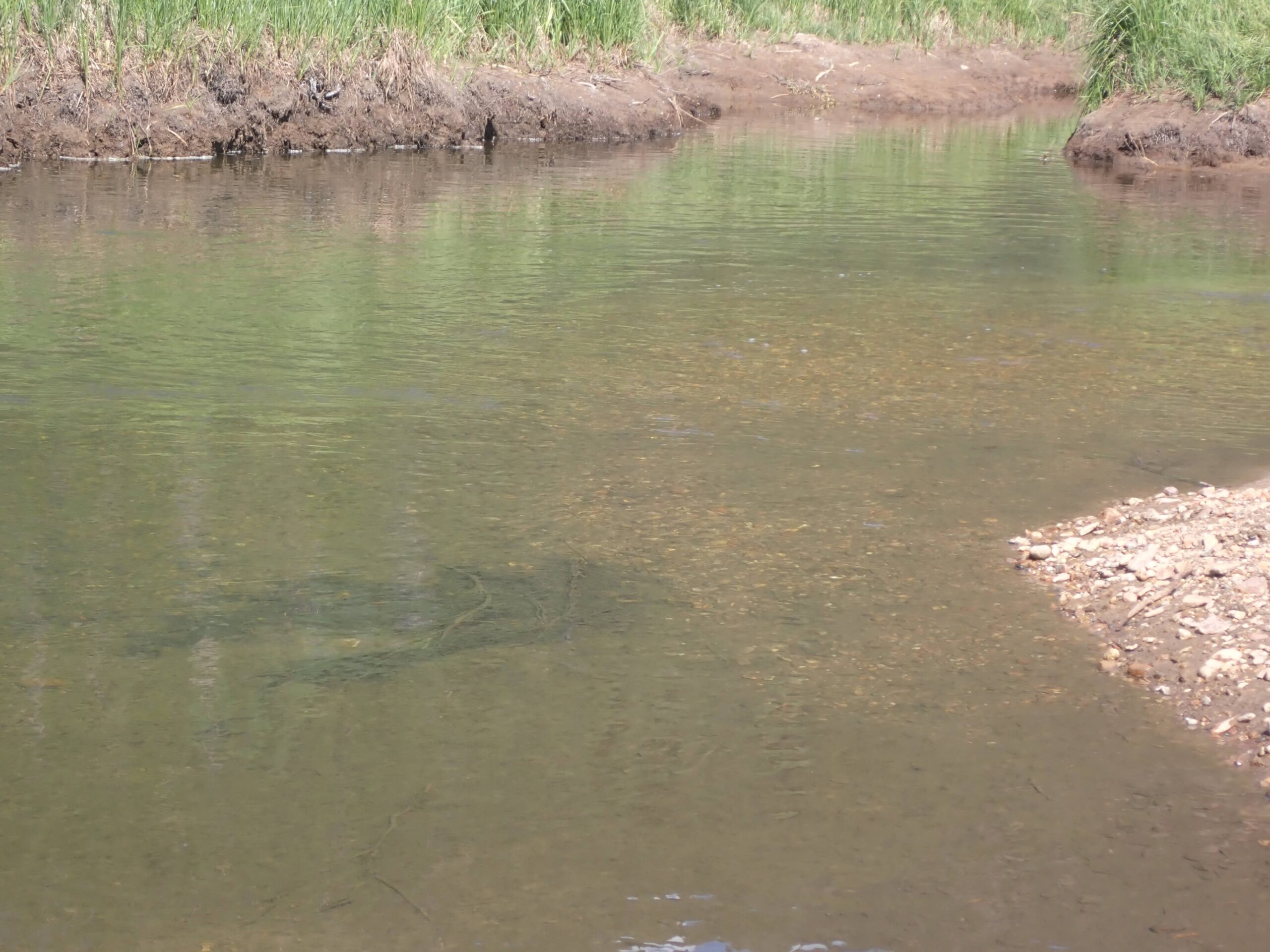 Prime Pool
Prime Pool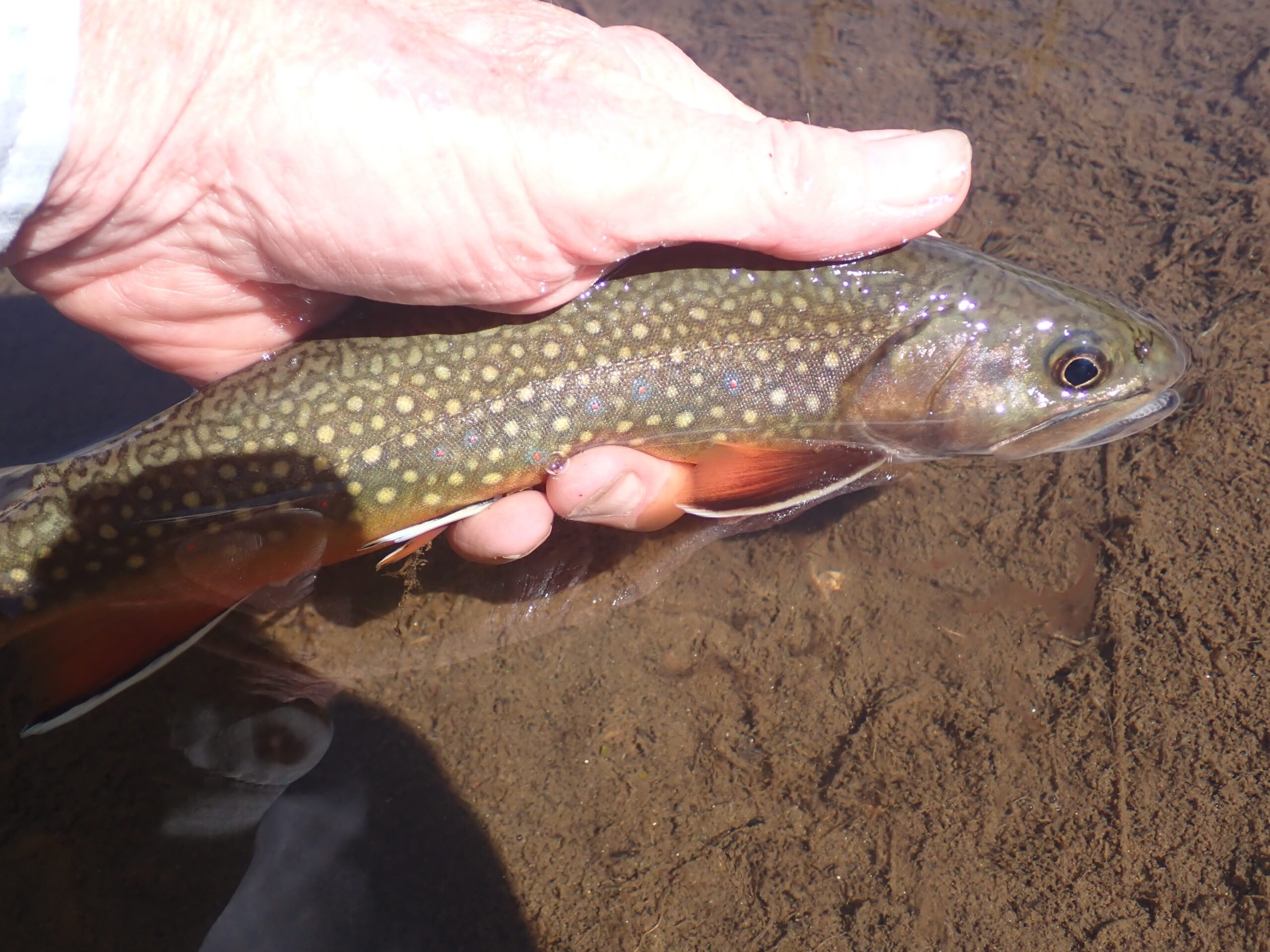 Handle with Care
Handle with Care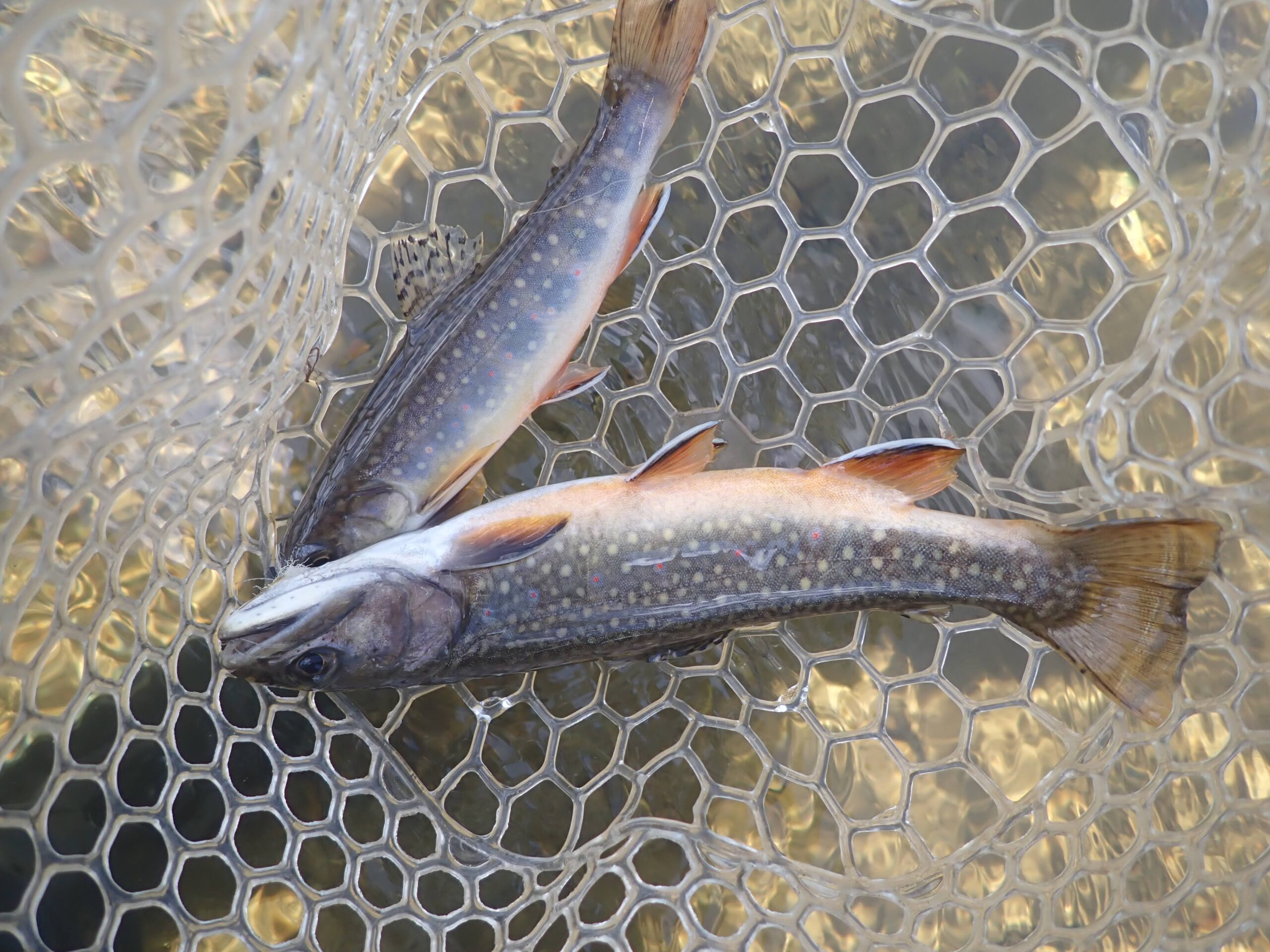 A Rare Double
A Rare Double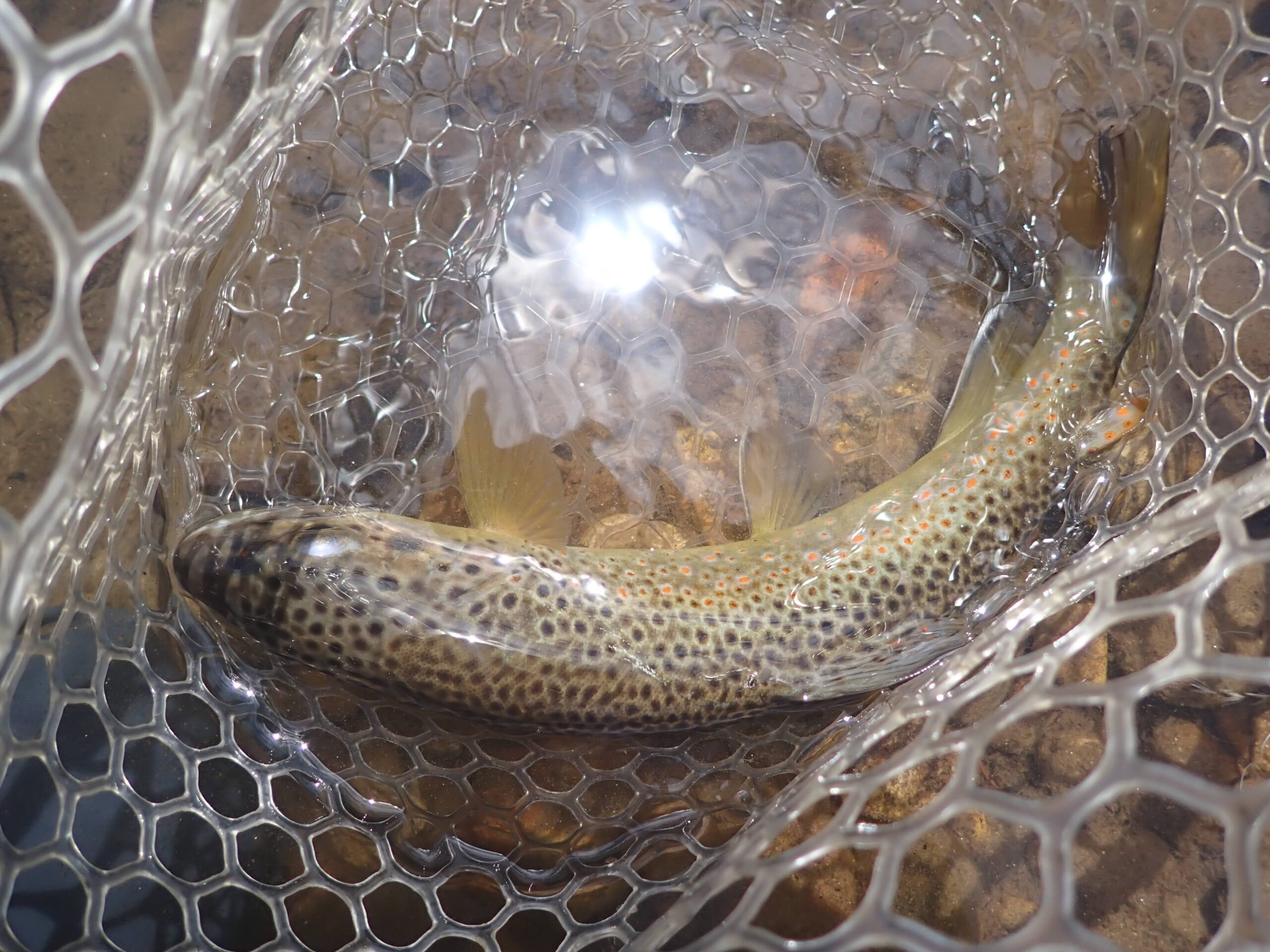 A Very Decent Brown
A Very Decent Brown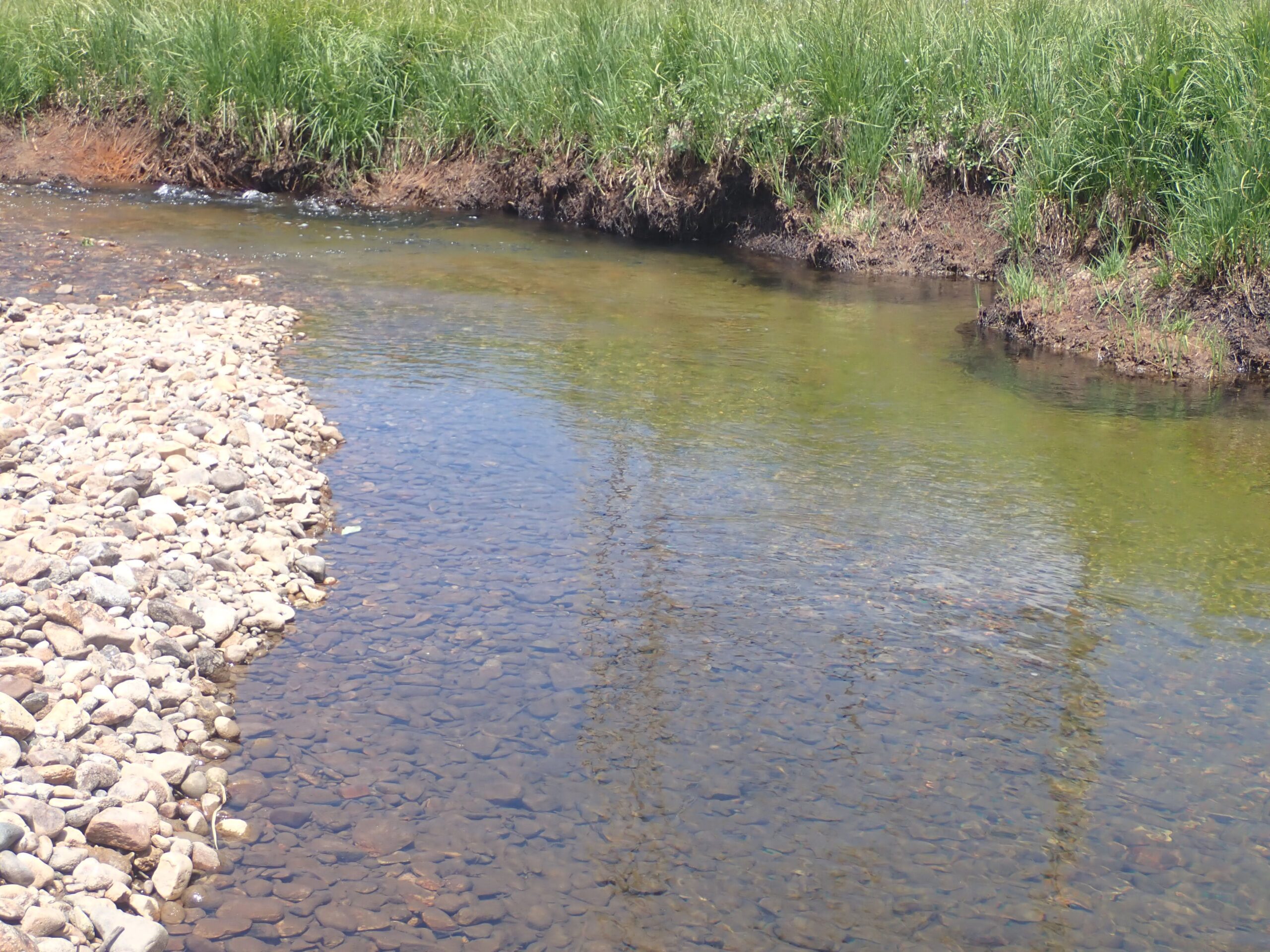 Bank Dwellers?
Bank Dwellers?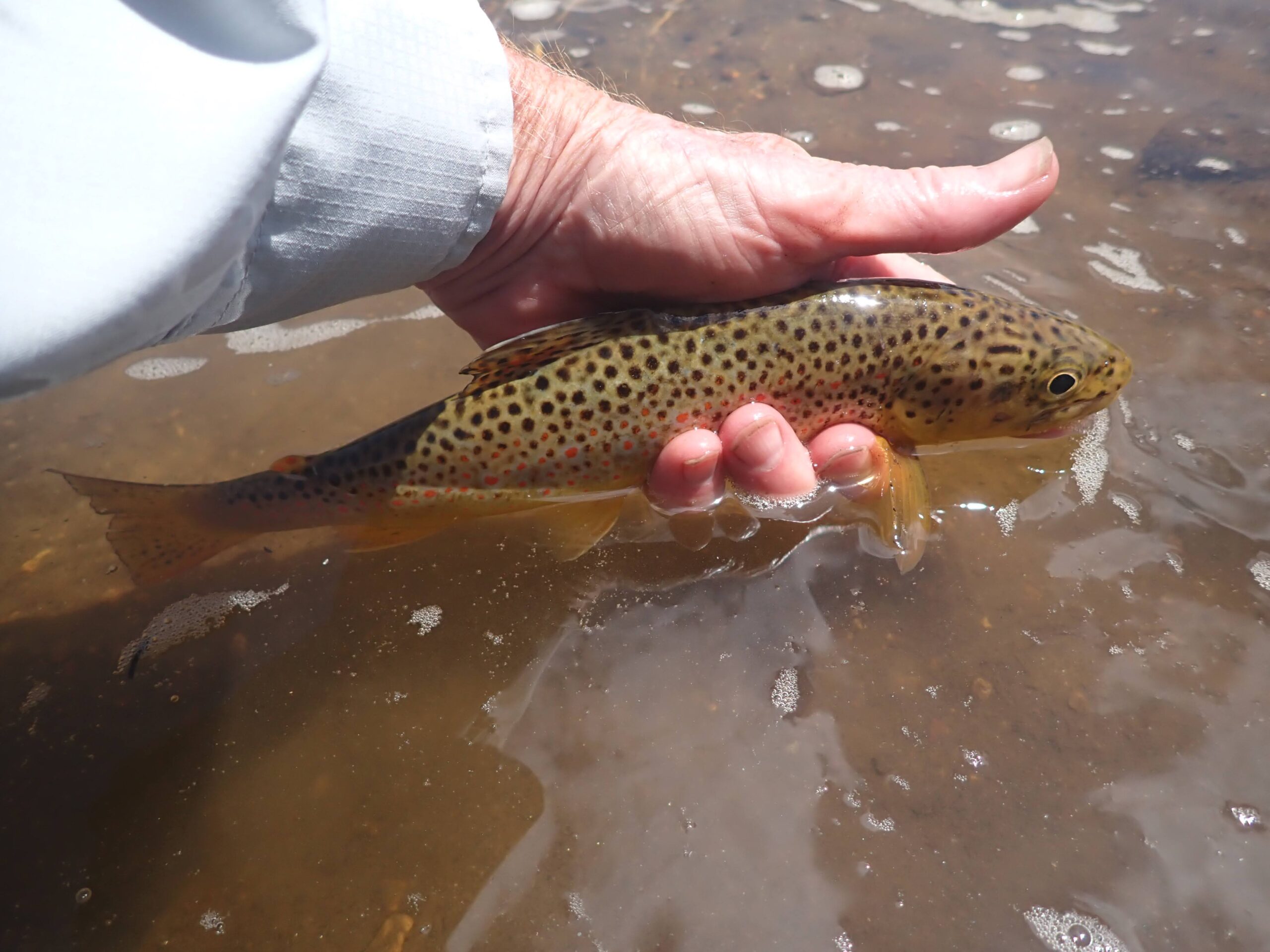 Best Brown Trout on the Day
Best Brown Trout on the Day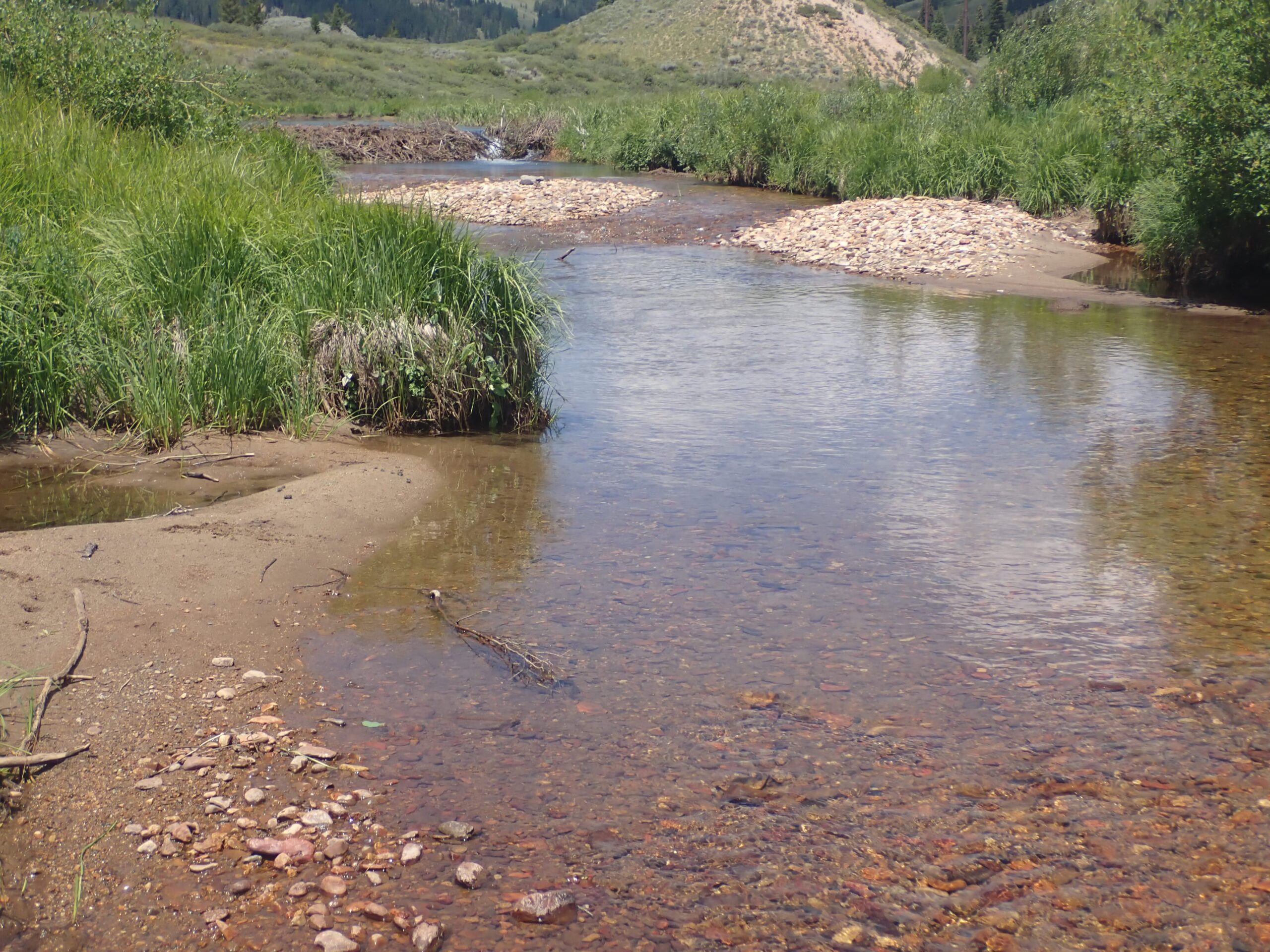 Another Smooth Pool
Another Smooth Pool
Another fun story… glad you changed the names to protect the innocent.